Edward Hopper is one of my favourite artists, his works speak to me like no others. It was an introvert type, he had a tendency to constantly escape and seek loneliness. In his works he showed alienation, loneliness, nostalgia and anxiety. In order to free himself from European influences and find American roots, Hopper focused on searching "objectivism"(although he did not use the term himself). His main carrier of emotions in the works was light, he emphasized that it is sometimes more important than the content itself. He considered the observation of the surrounding reality as the artist's fundamental value.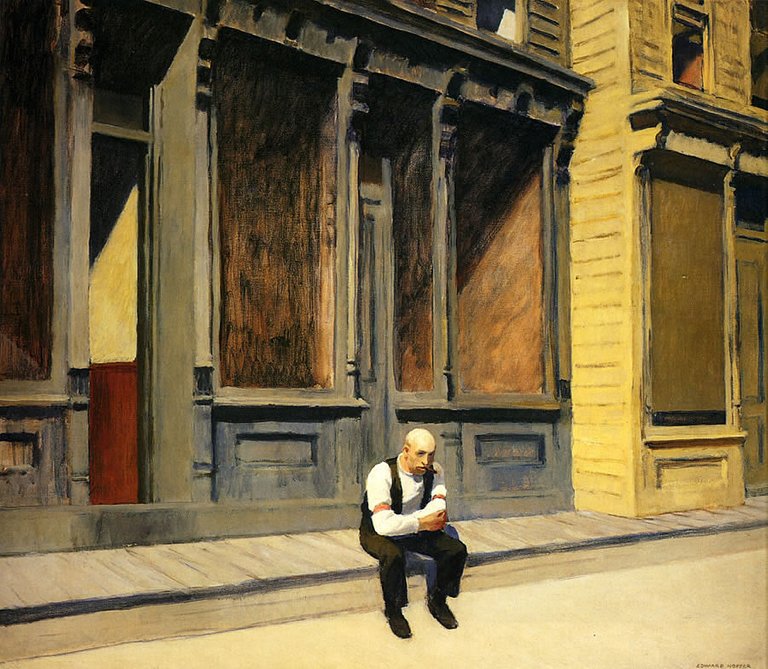 Hopper, "Sunday". A lonely man sits in the middle of an empty, quiet road. A seemingly ordinary Sunday scene in a deserted city, but sitting becomes an incarnate icon of hopelessness and helplessness.
Hopper, "Sunday". A lonely man sits in the middle of an empty, quiet road. A seemingly ordinary Sunday scene in a deserted city, but sitting becomes an incarnate icon of hopelessness and helplessness.
He did not talk much about work and life, hiding his images from viewers and critics. Edward Hopper, although he did not like people very much, his painting seems to be the best way to get to know the condition of modern man, whose loneliness seems to touch more than ever before.
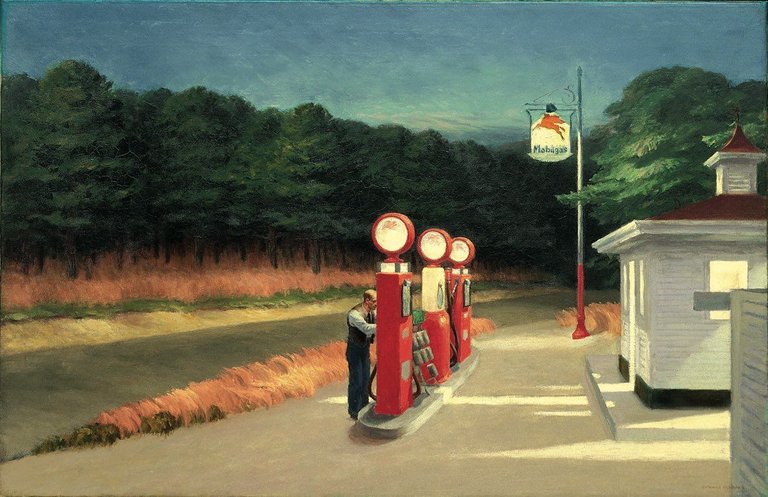 Hopper, "Gas station". Hopper explored the attitude of nature and civilization. Bright, almost fluorescent light is reflected from a small house, forcing the viewer's blind gaze to look at the other side of the road - into the unknown.
Hopper, "Gas station". Hopper explored the attitude of nature and civilization. Bright, almost fluorescent light is reflected from a small house, forcing the viewer's blind gaze to look at the other side of the road - into the unknown.
He's realistic, depicting subdued and nostalgic sceneries of American life, also have a rich magical dimension. Hopper is a painter of silence and unspeakable nostalgia. He is a master of mood building - in his works he chooses genre scenes, in which he skillfully hides a whole series of deeper feelings and meanings.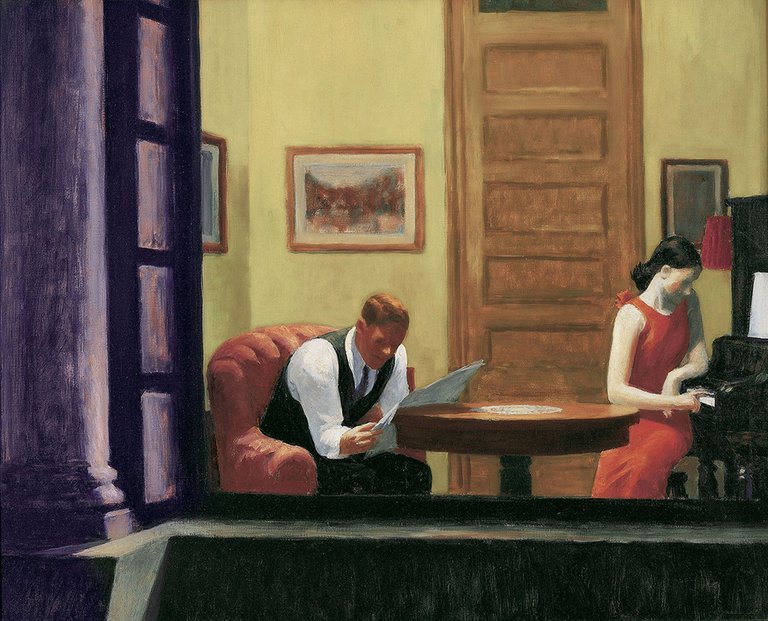
Hopper, "Room in the New York". The "reality of things" seems to be the distance and loneliness of a pair of young people in a bourgeois New York interior. The viewer must find out for himself what state of mind or event the subject served.
Like a paparazzi, hidden behind the corner of the street, he observes the people sitting in bars and flats in silence, observing them carefully and immortally, in an unusual way also taking into account their emotions and feelings. It's a great art - to create compositions cut out of unnecessary details that are at the same time a carrier of enormous content. Hopper is doing it perfectly.
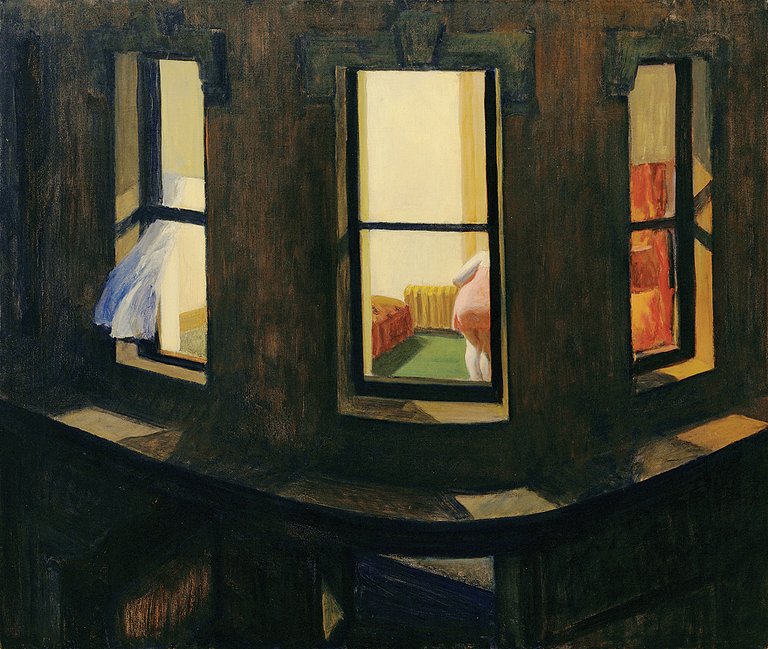 Hopper, "Windows at night". The painter does not tell urban anecdotes, his narratives are limited to an accidental situation, played by actors who are unaware of the artist's eye. Hopper, like an invisible director, optimally chooses the light, preparing the stage, until it is ready to be presented.
Hopper, "Windows at night". The painter does not tell urban anecdotes, his narratives are limited to an accidental situation, played by actors who are unaware of the artist's eye. Hopper, like an invisible director, optimally chooses the light, preparing the stage, until it is ready to be presented.
What the painter observes and decides to record in the picture is often filtered through his mood and internal sensations. We observe ordinary and extraordinary things at the same time, a close and distant world, foreign and similar people, also to ourselves.
"The topics I choose are the best synthesis of my inner life." - E. Hopper
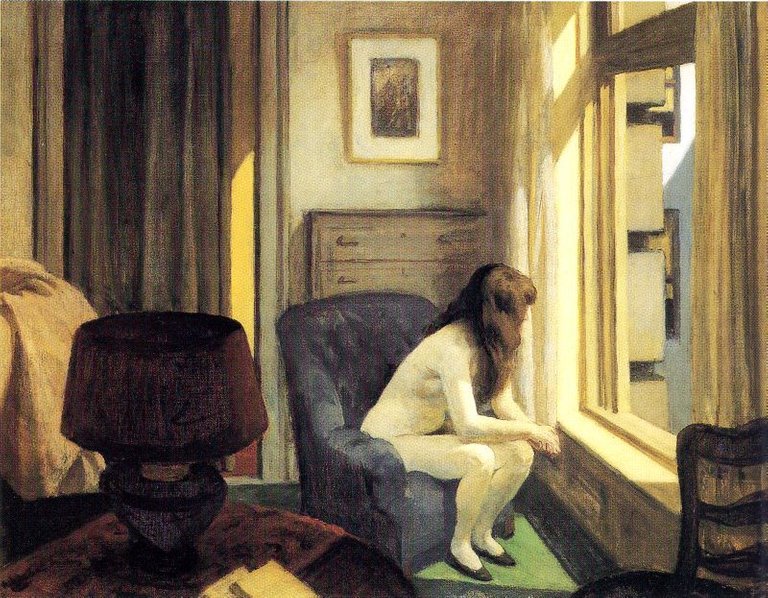 Hopper, "11 pm". Naked, long-eyed woman sitting by the window in a hotel room. Metropolitan interiors are saturated with the atmosphere of intimacy, for example by using the contrast of the female body and the impersonal metropolis barely outlined at the window.
Hopper, "11 pm". Naked, long-eyed woman sitting by the window in a hotel room. Metropolitan interiors are saturated with the atmosphere of intimacy, for example by using the contrast of the female body and the impersonal metropolis barely outlined at the window.
The scenes painted by Hopper are always static, as if stopped in motion. Drowsiness and nostalgia flows through the windows into hotel rooms and café interiors, overcrowded empty petrol stations and facades of buildings, arousing some unspeakable fear, introducing into a state of alarming expectations. Although nothing seems to predict that something bad will happen, his paintings give a constant impression that this silence is a harbinger of some inevitable, impending disaster.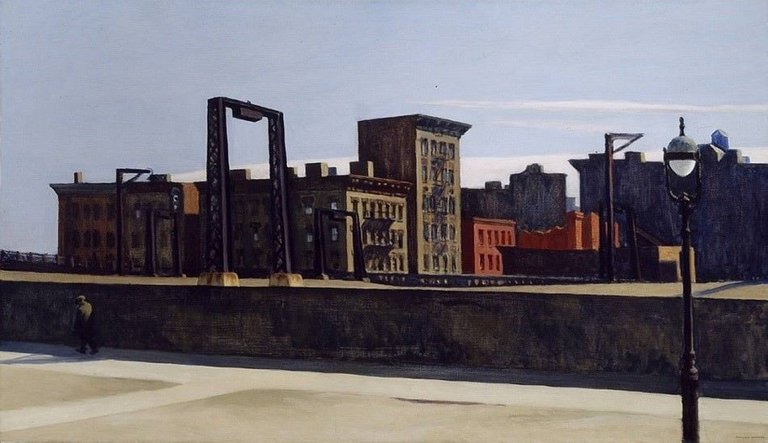 Hopper, "Manhattan Bridge". The back of a lonely man, walking across the bridge, extracts a flash of light. Hopper himself commented that the use of a horizontal canvas was to deepen the impression of the boundlessness of the second plan, where, over the outline of the building, the details of the landscape extend space indefinitely.
Hopper, "Manhattan Bridge". The back of a lonely man, walking across the bridge, extracts a flash of light. Hopper himself commented that the use of a horizontal canvas was to deepen the impression of the boundlessness of the second plan, where, over the outline of the building, the details of the landscape extend space indefinitely.
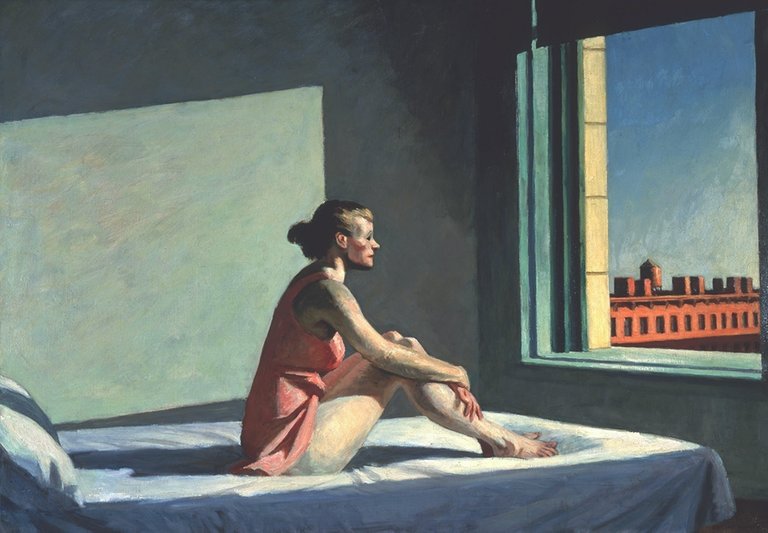 Hopper, "Morning sun". Most Hopper women look vulnerable and lonely. However, the sense of dignity requires them not to look for protection. The protagonist looks at the morning sun, making us realize that nature permeates the innermost places of the city.
Hopper, "Morning sun". Most Hopper women look vulnerable and lonely. However, the sense of dignity requires them not to look for protection. The protagonist looks at the morning sun, making us realize that nature permeates the innermost places of the city.
Hopper always leaves us with a margin to interpret and understand the work. Everything that appears to be unspoken, only the sensitivity and personal view of the viewer makes the work full sense, becoming an individual expression of the viewer's fears and desires. At the end, I present my favorite work of Hopper - Nighthawks, which I will present a detailed analysis in another post.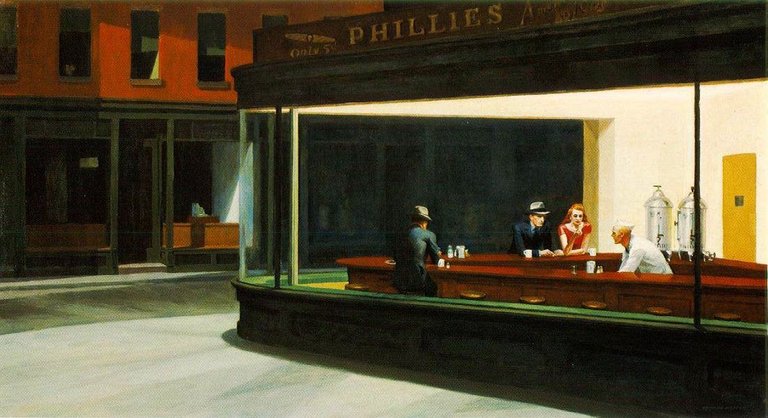
Hopper perfectly shows the times in which he came to live. Two world wars, great development, and then America's economic crisis, these events make people indifferent, as time passes, something in them is dead, something that makes them feel unrecognized, alienated and still lonely.